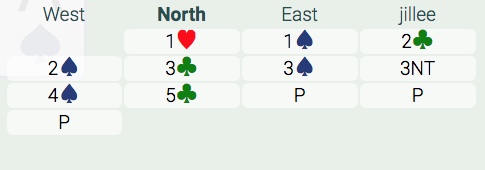015-019: Absolute Beginners - Play and Learn
018 – How to Place a Bid
Computer Bridge and making bids
BiddingThis term is also called the ‘auction.’ In each online deal, a player is the nominated as the dealer -this title rotates each new game. The dealer is the player who starts the bidding even if its a pass. Players take their turn at bidding in turn and in order … More is the most complex part of Bridge, with a large number of rules. However, in 60SecondBridge, you will be able to see bidding hints and follow those hints until you have studied the lessons and learned the necessary rules for each bid. By making extensive use of the hints at the beginning, you’ll be able to start playing Bridge very quickly. Then, over time, you’ll learn the bidding rules and become less reliant on the hints.
Watch this Video on using the bidding hints in 60SecondBridge
*Has audio ... turn your sound on
The purpose of bidding
Bidding involves knowing how high to bid with the combined hands of you and your partner. Bidding is how you communicate the strength of your hand to your partner. Of course, your opponents also understand the strength of your hand from you and your partner’s bids, as you are not allowed to have a private bidding system with your partner. You always need to ensure that your partner can describe what your bid means. The purpose of bidding is to estimate how many rounds you and your partner could win together if you win the contractThe final suit and level of bidding sets the number of tricks and the trump suit for the game.This is called the contract. The partnership that wins the bidding can earn the points if they succeed in getting the number of tricks they contracted.
The number … More by making the highest bid followed by three passes (called winning the auction).
6 tricks is the minimum target
NOTE: The minimum number of tricksA round of 4 cards where each player contributes 1 card. There are 13 tricks in a game of bridge. More you can bid for is 6. The first six winning tricks are assumed, and the number you bid is added to this basic six tricks. A bid of 1D, 1H, 1S, or 1NTThis bid in the opening position usually indicates that the bidder has a balanced distribution of suits however with some unbalanced hands you will respond 1NT just to keep the bidding low The distribution of suits in the hand can be in either of the three fol… More means you need to win at least 7 tricks. For example, a bid of 2D, 2H, or 2S means you must win at least 8 tricks.
Three different methods of recording the bidding
The bidding in a game could be written like this:
The bid means you have contracted to win at least 9 tricks with no trump suit.
The leading or first card played det… More)
But the above description is very long and wordy, so below is a shorter form of the same bidding...
| WEST | NORTH | EAST | SOUTH |
|---|---|---|---|
| 1H | 1S | 2C | |
| 2S | 3C | 3S | 3NT |
| 4S | 5C | P (pass) | P (pass) |
| P (pass) |
Here is the same bidding as it appears in the bidding pad...

The highest bid at the end of the bidding is called the ‘Contract’. In this example North-South have the 5 Clubs (5C) Contract and must win 11 ‘Tricks’ (rounds).
Instant Progress Quiz - Check the correct answer
Glossary
the highest bid at the end of the bidding (after 3 consecutive passes)
is when a player chooses to make no bid – they can re-enter the bidding at any time before the bidding finishes
writing or entering the bid which you think describes your hand best
when the other side have started the bidding and you want to make a bid it is called overcalling and the noun is ‘overcaller’

I made 10 tricks….
I made 9 please show me how to make 10
how can I replay a lesson after I have marked it complete
How do you count points? A4, K3, Q2, T1, 5 cards or more 1….is this correct? I’m counting my cards as 13, but “hint” says 10.
Jacks are 1 and tens are 0.
With the KD lead, it was possible to make 12 tricks